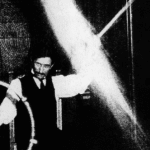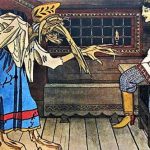 Weird Stuff
Weird Stuff  Weird Stuff
Weird Stuff  Our World
Our World 10 Ways Your Christmas Tree Is More Lit Than You Think
 Movies and TV
Movies and TV The 10 Coolest Stars to Set Sail on The Love Boat
 History
History 10 Things You Didn’t Know About the American National Anthem
 Technology
Technology Top 10 Everyday Tech Buzzwords That Hide a Darker Past
 Humans
Humans 10 Everyday Human Behaviors That Are Actually Survival Instincts
 Animals
Animals 10 Animals That Humiliated and Harmed Historical Leaders
 History
History 10 Most Influential Protests in Modern History
 Creepy
Creepy 10 More Representations of Death from Myth, Legend, and Folktale
 Technology
Technology 10 Scientific Breakthroughs of 2025 That’ll Change Everything
 Weird Stuff
Weird Stuff Ten Bizarre Facts About The Doge Meme
 Our World
Our World 10 Ways Your Christmas Tree Is More Lit Than You Think
 Movies and TV
Movies and TV The 10 Coolest Stars to Set Sail on The Love Boat
Who's Behind Listverse?

Jamie Frater
Head Editor
Jamie founded Listverse due to an insatiable desire to share fascinating, obscure, and bizarre facts. He has been a guest speaker on numerous national radio and television stations and is a five time published author.
More About Us History
History 10 Things You Didn’t Know About the American National Anthem
 Technology
Technology Top 10 Everyday Tech Buzzwords That Hide a Darker Past
 Humans
Humans 10 Everyday Human Behaviors That Are Actually Survival Instincts
 Animals
Animals 10 Animals That Humiliated and Harmed Historical Leaders
 History
History 10 Most Influential Protests in Modern History
 Creepy
Creepy 10 More Representations of Death from Myth, Legend, and Folktale
 Technology
Technology 10 Scientific Breakthroughs of 2025 That’ll Change Everything
10 Most Famous Crimes in the History of Las Vegas
Las Vegas is a city that embraces the baser side of human nature, so it shouldn’t come as a surprise that it is also home to an array of shocking crimes that we will explore below. One of the city’s most famous crimes, the murder of rapper Tupac Shakur, is missing because you can read all about it here. After you read this one. (And seriously, you want to read this one.)
10 Hilton Arson
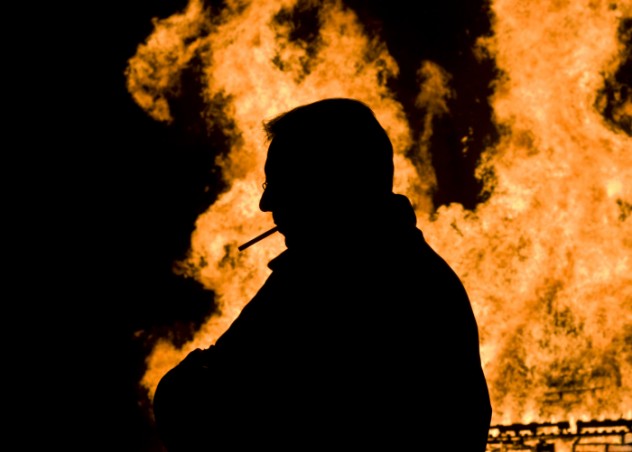
The Las Vegas Hilton is famous for headlining acts like Elvis and Liberace, but the hotel is also the scene of one of the city’s most horrific crimes.
Philip Cline had been at his new job as a busboy at the Hilton for a grand total of two days when a fire broke out in an elevator lobby near him on the eighth floor. He alerted several guests and claimed he used a nearby wastebasket to throw water on the flames. The fire consumed much of the building, killing eight people and injuring 200 more.
Cline was initially lauded for his actions, but investigators became suspicious when he made a Freudian slip and told the police he had “grabbed a trash can and filled it with fire.” Homicide detectives questioned Cline further about his story and he finally broke down. He admitted starting the fire, but claimed he had done it accidentally when the joint he was smoking set some nearby curtains on fire. Investigators doubted that version of events when they were unable to replicate a fire starting in that same manner.
Cline was convicted of eight counts of murder and one count of arson and sentenced to life in prison. He later granted a jailhouse interview where he came clean about what really happened the day of the fire. A friend had given him a joint laced with PCP before work, warning him not to smoke the whole thing at once. Cline ignored this advice and—in a PCP-induced stupor—he used his cigarette lighter to set fire to some curtains. He is expected to serve out the rest of his days behind bars.
9 Supermarket Massacre

The United States has been plagued by a string of mass shootings in recent years and Las Vegas has not been spared from this epidemic. Early on the morning of June 3, 1999 Zane Floyd, a 23-year-old ex-Marine, walked the two blocks to a nearby Albertson’s supermarket carrying a 12-gauge shotgun. Floyd shot an employee near a row of shopping carts at the entrance before roaming the store and murdering three more employees.
Surveillance footage later emerged showing Floyd chasing his last victim, Zachary Emenegger, before shooting him in the back and then once more as he lie on the ground. Emenegger was severely wounded but alive and he decided his best option was to play dead. Floyd wandered the store before returning to the motionless Emenegger, pausing a moment before saying “Yeah, you’re dead.”
Having shot everyone he could find in the store, Floyd tried to flee on foot, but the police had the building surrounded. A standoff ensued as Floyd stood outside the store with a gun to his head, threatening to kill himself. The police eventually talked him into surrendering and Floyd was eventually convicted of four counts of murder as well as the rape of an exotic dancer he committed earlier that morning. He currently sits on Nevada’s death row awaiting execution.
This terrible incident is used by law enforcement when educating the public on how to respond to a mass shooting incident. Experts recommend hiding, fighting, or running from an attacker, but if those aren’t options, the best tactic is playing dead to survive, like Emenegger did.
8 The Biker Bandit
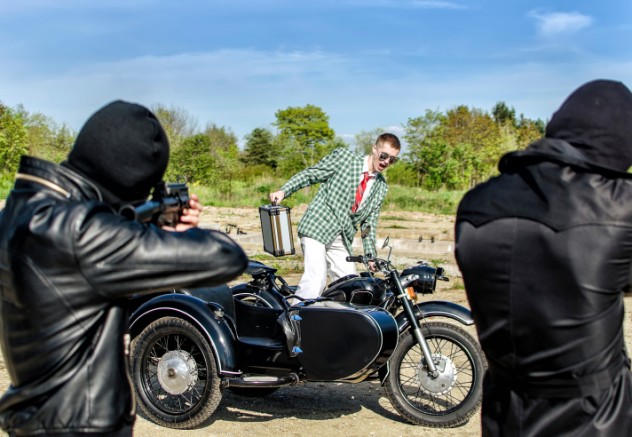
The casinos lining the Las Vegas strip are some of the most heavily surveilled places in the world. As a result, very few are robbed, and when they are, the perpetrators are usually quickly apprehended. This story is one of the boldest casino heists in the city’s history, and this thief actually almost got away with it.
On December 14, 2010, a man parked his motorcycle in front of the Bellagio Hotel and Casino and walked inside. While still wearing his motorcycle helmet, the man walked up to a craps table and pulled a gun. The dealer turned over his chips and the robber ran back through the casino, speeding off on his bike into the heavy traffic of the strip.
The thief made off with $1.5 million in chips, but that would prove to be his downfall. The chips would either have to be turned in at the casino or sold to a third party. The first clue emerged a few weeks after the robbery when a Salvation Army bell-ringer tried to cash in a $25,000 chip given to him by a stranger. Shortly thereafter, a person calling himself the Biker Bandit appeared online offering to sell more of the $25,000 chips. Undercover Las Vegas police officers made contact with the Biker Bandit and arranged a meeting at the Bellagio to buy the chips. Police nabbed 29-year-old Anthony Carleo and charged him with the robbery.
The full brazenness of the Biker Bandit’s actions only became apparent after his arrest. It turned out that Carleo had been staying at the Bellagio as a guest when he committed the robbery, and he even returned to the casino afterwards to drink and gamble. He had also carried out another robbery of a different casino three weeks before the Bellagio heist, making off with $18,000. In one final twist, Carleo was also the son of a local judge. Carleo was convicted and received a sentence of 3–11 years for the Biker Bandit crimes.
7 Al Bramlet Murder
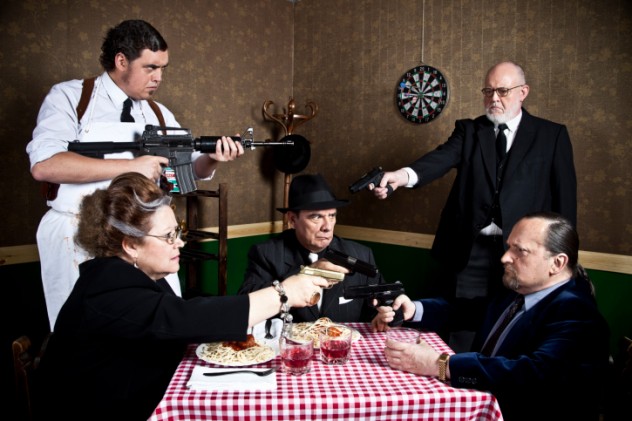
From the late ’50s until the early ’70s, the head of the Las Vegas Culinary Worker Local 226 union, Al Bramlet, was as powerful as any mobster or casino owner in the city. The overwhelming number of service jobs in Las Vegas caused the Local 226 to become one of the most powerful unions in the nation, representing almost every waiter, housekeeper, and dishwasher in the city’s hotels. However, Bramlet’s power rested not only in his ability to effectively organize his members, but also in his ruthless willingness to use violence to achieve his goals.
During his time as head of the union, Bramlet managed to organize almost every service worker in town under his banner. Bramlet went beyond using the picket line to get businesses to agree to unionize, though. In December 1975, a non-union gourmet restaurant in west Las Vegas was destroyed when two bombs went off on its roof and another high-end restaurant was demolished by a bomb in January 1976.
The seeds of Bramlet’s downfall were sown on a night in January 1977 when bombs he had ordered placed in front of two restaurants failed to explode and were discovered by the police. The hit men Bramlet hired to bomb the restaurants—Thomas Hanley and Gramby Hanley, who were also father and son—became enraged when he refused to pay them for the failed attacks and they began plotting their revenge.
The Hanleys knew that Bramlet carried a .357 revolver on him at all times. However, Bramlet took frequent business trips out of the city, which meant there was one place he would be sure to be unarmed—getting off the plane at the airport. On February 22, 1977, the Hanleys approached Bramlet at McCarran International Airport as he returned from a trip to Reno and forced him into their van at gunpoint.
As they drove out of the city, the Hanleys asked Bramlet to arrange the payment for the bombs, reassuring him that he would be released once they were paid. The van stopped at a payphone where Bramlet called an executive at the Desert Inn Casino and arranged a $10,000 loan to pay his kidnappers. After Bramlet made the call, the van headed deep into the desert where Tom Hanley fired six bullets into Bramlet. His body was discovered three weeks later by hikers. A criminal associate of the Hanleys would later provide evidence of their involvement in Bramlet’s murder to the authorities, resulting in life sentences for the father-son hit man team.
In 1995, a federal court ordered the union to enter into a consent decree that put it under outside supervision to ensure transparency. Today, the Culinary Workers Local 226 is still one of the most powerful unions in the country and plays a large role in ensuring that the wages of the service workers that keep Las Vegas running are significantly higher than the national average.
6 Kidnapping Of Steve Wynn’s Daughter

The casino moguls that run the Las Vegas strip are worth billions of dollars. That net worth can make them, and their families, attractive targets for criminals intent on making a quick fortune. Steve Wynn, the CEO of the company that owns Treasure Island and the Bellagio, had just returned home from work on July 26, 1993 when he took a call from a man who claimed to have kidnapped his daughter.
It turned out that Wynn’s 26-year-old daughter, Kevyn, had been abducted by two armed men from her posh home in an exclusive Las Vegas neighborhood. The kidnappers demanded $2.5 million in ransom, but they settled for $1.45 million when Wynn told them that was all the cash he had on hand that night. Wynn took the money from the casino vault and loaded it in a white plastic bag, which he left in a parked car a few miles from the strip. Once the kidnappers picked up the ransom, they called Wynn and told him he could find his daughter at McCarran International Airport. Wynn found his daughter tied up, but safe, in a car at the airport parking lot.
The police received their break just one day after the kidnapping, when a sporting club manager named Ray Cuddy walked into a car dealership in Newport Beach, California and tried to pay for a new Ferrari with $200,000 in cash. When Cuddy returned to the dealership a few days later to finalize the purchase, the FBI was waiting for him. Shortly after Cuddy’s arrest, his accomplice, Jacob Sherwood, was also arrested. Both men were convicted of a litany of charges related to the kidnapping and were sentenced to decades in federal prison, but after reading the next story, you may think that Cuddy and Sherwood got off light.
5 Ted Binion Kidnapping Plot

This story involves another child of a casino owner that is targeted by kidnappers, but this time, the would-be kidnappers chose the worst possible hostage. Benny Binion got his start in Texas in the 1930s running a series of gambling saloons, and during that time, he admitted to gunning down a business competitor and was suspected in several other murders. Binion came to Las Vegas in the 1940s, where he established the Horseshoe Casino, home of the World Series of Poker.
Fast forward to late 1967, where Las Vegas cab driver Marvin Shumate has hatched a plan to get rich quick by ransoming the child of a casino owner, and his target was Benny’s 24-year-old son, Ted Binion. We can only wonder if Shumate had an actual death wish or whether he was just that stupid when he decided to kidnap the child of an old-school cowboy and confessed killer with organized crime connections. The plan was to use information gathered from Shumate’s son, who was friends with Ted Binion, to abduct the young Binion and hold him for ransom. Shumate recruited another cab driver into his conspiracy, but he got cold feet when Shumate told him that they would have to kill Ted in order to get away with the crime. Instead of going to the police about the plot he went directly to old man Binion.
Shumate’s body was found on a mountain overlooking Las Vegas on a morning in December 1967. He had suffered a shotgun blast to his chest and a single revolver bullet to his head. No one was ever charged in Shumate’s murder, but the police and FBI felt the evidence showed that Benny Binion had ordered the hit. As for Ted Binion, he would ultimately be found dead under mysterious circumstances in 1998. His best friend and live-in girlfriend were charged with his murder in a trial that captured national attention but both were acquitted upon appeal.
4 OJ Simpson Sports Memorabilia Heist
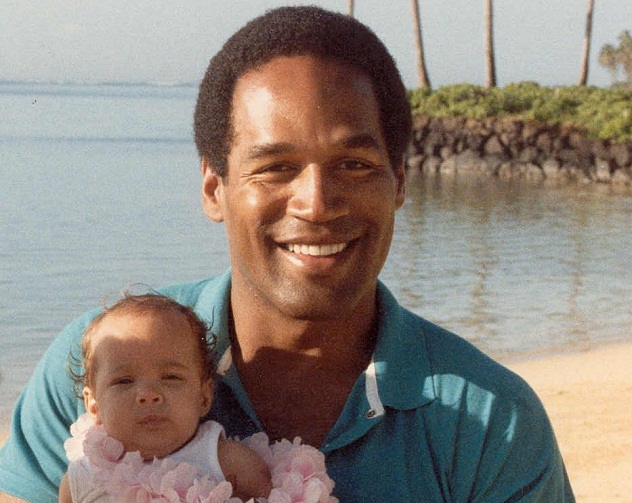
We all know OJ Simpson for his professional football career and his roles as a comic actor—oh, and that whole trial for the murder of his ex-wife and her lover. Simpson was acquitted of murder but he later ran into financial difficulties when the families of the murder victims won a multimillion-dollar civil judgment against him. It was these financial troubles that would ultimately send him to prison.
In 2007, most of Simpson’s income was still being seized to pay off his civil judgments when he received a phone call from auction house owner Thomas Riccio informing him that two sports memorabilia dealers would be selling several items that used to belong to Simpson in Las Vegas. Riccio arranged a meeting between Simpson and the memorabilia dealers in a room at a hotel about a mile from the strip, but unbeknownst to anyone else in the room, Riccio had hidden a small tape recorder on a dresser. Simpson arrived at the hotel room with five associates, some of whom began brandishing guns. Simpson ordered his friends to prevent anyone from leaving the room while he gathered several hundred pieces of memorabilia from the dealers. The heist was over in six minutes, and Simpson and his friends were recorded laughing about their exploits later over dinner—but Simpson would not be laughing for long.
When the police questioned Simpson, he claimed that no one in his entourage had a gun during the incident and he was just trying to recover items that had been stolen from his house years before. Simpson’s story fell apart, though, when the audio recording of the robbery came out and several of Simpson’s accomplices agreed to become witnesses for the prosecution in exchange for lighter sentences. Simpson refused a plea deal that would have sent him to prison for 2–5 years and took his case to trial. After several weeks of testimony, Simpson was convicted and sentenced to 33 years in prison for kidnapping and armed robbery. It just goes to show that you usually only get one get-out-of-jail free card in your life.
3 Jessica Williams
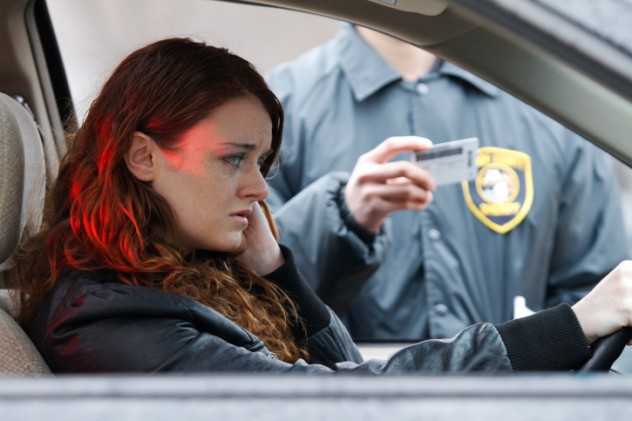
It is not often that a DUI makes a list of notable crimes, but this story is notable in its controversy over the role of marijuana in DUI cases. On March 19, 2000, a 21-year-old exotic dancer named Jessica Williams concluded a hiking trip outside of Las Vegas. On the drive back to the city, Williams’s minivan careened off the interstate and tore through a group of teenagers who were cleaning up the side of the road as punishment for petty juvenile offenses. When the van rolled to a stop, six teenagers were dead.
Williams told police officers at the scene of the accident that she had fallen asleep at the wheel and admitted that she had taken ecstasy 12 hours earlier, in addition to smoking a few hits of marijuana about two hours prior to the incident. Williams appeared alert to the police and paramedics, but her blood tests exceeded the legal limit for marijuana metabolite and she was charged with vehicular manslaughter for driving while intoxicated. Marijuana metabolites can remain in a person’s blood for up to 30 days after using marijuana, even though the person is no longer feeling the effects of the drug.
At her trial, Williams argued that she had not slept for 24 hours before the accident and claimed that she fell asleep at the wheel due to fatigue rather than the marijuana. The jury agreed that Williams was not impaired, but still found her guilty of having more than the legal limit of marijuana metabolite in her blood at the time of the accident and she was sentenced to 48 years in prison. Meanwhile, the law Williams was convicted under remains unchanged, which means a person can still be convicted of a DUI in Nevada even though they are not intoxicated while driving.
2 The Coulthard Car Bombing
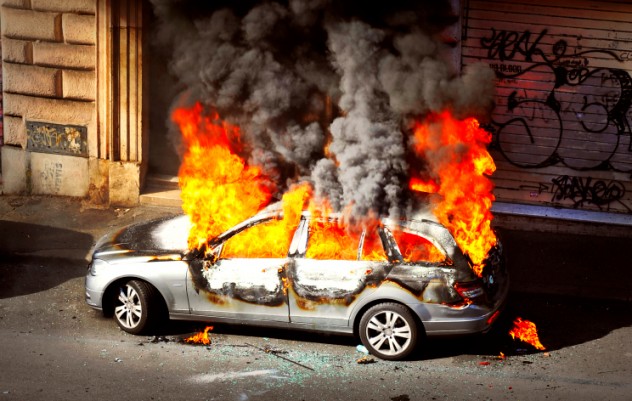
Casino owner Benny Binion is again on this list, but this time, as a prime suspect behind a brazen murder over the ownership of a downtown casino. Bill Coulthard was a Las Vegas fixture since he moved to the town in 1946. He was an FBI agent and served as the first head of the Las Vegas field office. After retiring from the Bureau, Coulthard became a well-known attorney and businessman. Among his various business interests was a stake in the ownership of the land that the Horseshoe Casino was located on. In the early 70’s Benny Binion’s lease for the Horseshoe was set to expire and Coulthard stubbornly refused to renew it, which meant Binion would lose the casino he had spent his entire life building.
The negotiations over the lease took a deadly turn on July 25, 1972 when Coulthard left his downtown office and got into his car on the third floor of an adjacent parking garage. When Coulthard turned the ignition, he set off a bomb so powerful that it killed him instantly, set several nearby vehicles on fire, and gouged a hole in the concrete floor of the garage.
The Las Vegas police and FBI were on the case, offering a $75,000 reward for information leading to the killers. Multiple leads were pursued, but ultimately no one was arrested for the murder and the case remains open. The FBI believed that Benny Binion was likely responsible for ordering the hit, a theory supported by the fact that after Coulthard’s murder, the remaining landlords signed a 100-year lease that allowed Binion to retain ownership of the Horseshoe.
1 The Hole In The Wall Gang
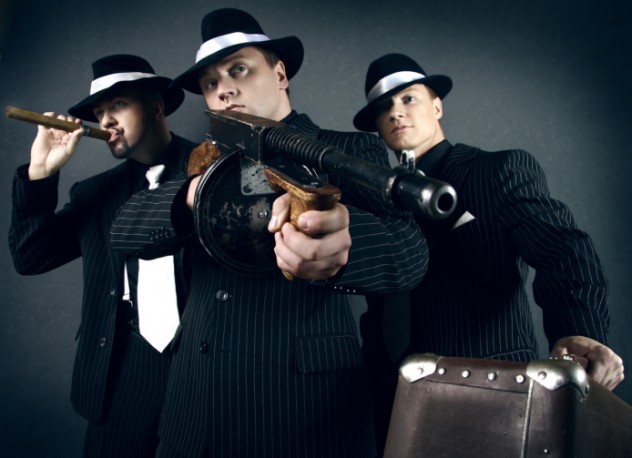
Tony “The Ant” Spilotro is perhaps the most notorious mob enforcer in Las Vegas history. For much of the ’70s and ’80s, Spilotro was the man mob bosses from across the country trusted to ensure that their millions of dollars of investments in strip casinos were protected. When an informant or troublemaker needed to be murdered, Spilotro was the man hired for the job.
But Spilotro was ambitious and began to start his own separate criminal enterprise. He gathered a group of men ranging from professional thieves to ex-cops that carried out a crime wave in Las Vegas. The group—which became known as “The Hole in the Wall Gang”—robbed local drug dealers and engaged in loan sharking, but they were most notorious for performing high-end burglaries, usually targeting jewelry stores. In fact, the group got its nickname from their tactic of smashing a hole in the walls or ceilings of the stores they robbed in order to bypass alarm systems. Conveniently, Spilotro operated a jewelry store of his own called the Gold Rush, where he fenced most of the property stolen by the group.
The gang met its downfall in July 1981, when six of its members were arrested during the burglary of an upper-scale furniture store. The federal government charged Spilotro with crimes related to the Hole in the Wall Gang, but the jury couldn’t reach a verdict. Spilotro’s bosses back in Chicago were not happy with the unwanted attention his planned retrial would bring to their operations. On top of that, Spilotro had been carrying on an affair with the wife of top Las Vegas mob boss Frank “Lefty” Rosenthal, which culminated in a 1983 assassination attempt on Rosenthal that law enforcement suspect Spilotro was behind.
Spilotro was summoned back to Chicago in June 1986 shortly before his retrial, and he brought along his brother Michael, a fellow mob enforcer. The brothers went to a house in rural Indiana for a business meeting, where they were met by a group of mafia hit men. The Spilotro brothers were beaten and strangled, and their bodies buried in a nearby cornfield. As for the rest of the Hole in the Wall Gang, most were sentenced to long prison terms on burglary and racketeering charges, while others met the same fate as the Spilotros. The exploits of Spilotro were dramatized in the 1995 movie Casino, where Joe Pesci offered a spot-on portrayal of the hot-tempered mafia thug.
Anthony is a full-time attorney and part-time compiler of knowledge in list form. He dwells in the vast urban sprawl outside of Las Vegas.



